For most cat owners, they know having cat litter is a necessary evil around the house. A litter box is essential for cats, but this small object brings a lot of responsibility to the cat owner. Litter boxes should be clean all the time, failure to ensure this may lead to the cat excreting around the house. So how to dispose of cat litter has become a heated problem for cat owners.
To secure the litter box’s cleanliness, occasionally, the litter needs to be changed and properly disposed of. Now despite cats being fairly harmless creatures, the contrary can be said about their waste. Feline waste is very hazardous not only to the environment but also to us, as their owners. Keeping this crucial information in mind about how we dispose of cat litter is very important.
How to dispose of cat litter?

1. Protective equipment while disposing of cat litter
While scooping out the cat litter, we also need to protect ourselves from potential harm that may arise from cat litters. To fully protect our selves we need to wear and have some protective equipment such as:
- Litter scoop
- Plastic bags
- Surgical masks
- Hand gloves
2. How to dispose of specific types of cat litter?
Most people, however, tend to think the surgical mask is optional; however, the covers are essential, especially if your litter easily dusts up. Having established there are different types of waste, here is a list of different kinds of kitty litter and how to properly dispose of them.
2.1. Clay clumping litter

The clay clumping litter is the cheapest and easiest type of litter to utilize for our fluffy friends. The clay type of litter is mostly composed of bentonite clay. To dispose of clay litter is very tricky. Here are the steps to follow to safely and adequately dispose of the clay litter
2.1.1. Scoop out of litter box
Using a litter scoop, carefully scoop the clear clumping out of the litter box. It is wise to note that clay is made up of fine particles; hence, while spooning this process may lead to dust dispersing into the air. I guess at this point, we get to realize the importance of surgical masks, don’t we?
The dust particles may potentially contain hazardous material from the cat’s waste that may bring or cause health complications to us.
2.1.2. Putting them into trash bag
Carefully put the clay clumping into a small trash bag and tie off the trash bag as tightly as possible. To prevent bacteria or any bad smell from escaping or leaking out of the bag, it is advisable that you double bag the scooped litter. Proceed to the garbage can outside the house, place it inside, and ensure the lid is tightly shut.
Tips:
I implore you to use good quality trash bags, especially for clay clumping, as they tend to be heavy at times. Avoid putting the litter directly into the trash as it leads to odors spreading and easy contamination of the environment and the air. This is the only way to dispose of your clay litter safely.
If you are thinking of flushing, I have to stop you right there for the sake of your plumbing system. Clay is a highly absorbent substance, especially when it comes to water, so imagine putting it in the toilet or the drainage system; need I say more?
2.2. Silica clumping litter
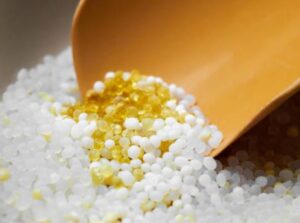
Silica clumping is almost similar to clay; its key advantage comes in where it doesn’t create as much dust as clay. However, a bit contrary to clay, it is very dangerous and harmful when inhaled or consumed.
Silica is disposed of by throwing it in the garbage can. Sounds easy, right? But it is not just thrown in the garbage can directly. Here are a few pointers on how to properly dispose of silica clumping:
2.2.1. Scoop the litter using a litter scoop and ensure you wear a surgical mask always.
2.2.2. Never forget the silica, not failing to mention the cat’s waste is very hazardous. Place it inside a trash bag and tightly seal it off, then place it in a trash can that has a lid.
Tips:
Keep in mind that silica is a carcinogenic substance while handling it. Despite its carcinogenic nature, it serves its parks, such as masking odors in addition to tightly clumping waste. Similar to clay, it is highly absorbent when exposed to water; hence not ideal for flushing.
2.3. Newspapers

Newspapers are also a type of cat litter, which are not only cheap and readily advisable but also environment friendly. They do not produce any form of dust and highly absorb cat wastes, especially urine.
Although newspapers can easily be flushed down the drain, it is highly discouraged to do so, especially if they contain cat wastes. To properly dispose of the newspaper, I advise you to go for the trash can option.
2.4. Wheat or corn litters
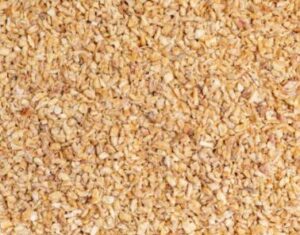
This type of litter doesn’t clump as easily as clay. This may bring about complications when the process of disposal is brought into question. They easily scatter; hence they don’t clump the cat waste properly.
When disposing of them, carefully scoop off all the litter into a garbage bag. When I say carefully, please be careful; this type of litter easily scatters, and as it has already been established, feline litter is hazardous to everyone, not excluding the environment.
2.5. Pine litters
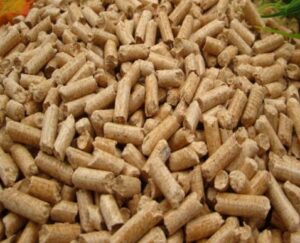
Has litter disposal ever gotten easier? Pine litters are biodegradable, making them not only the safest but also the easiest to deal with. It is made from pine lumber, and not only does it bind well to waste, but it is also advantageously non-tracking.
Noting that it is biodegradable, it can be dumped on our flower gardens, and it will easily decompose without any form of pollution.
Things you should avoid when disposing of cat litter
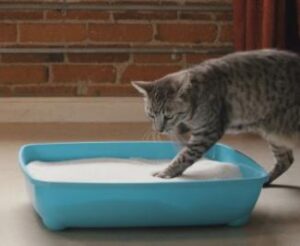
The disposal of cat litter is a necessary evil for every home that has a feline. Thanks to modern progress, litter disposal has been made easier. Litter disposal could not be easier today; nonetheless, it is still a very delicate process.
Feline waste contains very hazardous substances and harmful bacteria that pose harm to the environment and humans. To prevent unnecessary harm from coming to us, here are a few guidelines to follow on things to completely avoid:
1. Never flush cat litter
Now I feel like I can not put enough emphasis on this delicate issue. Do not flush down your cat’s litter. Now I get that some store-bought litter claim it is suitable for flushing, but this should not be the case. Feline waste is hazardous and should not be exposed so carelessly to the environment.
2. Do not dispose of in vegetable gardens
Yes, some cat litter can be used as composed. When used in this way, they are useful as they easily decompose in addition to raising the temperature of the compost heap, which accelerates the rate of decomposition.
However, it is not advisable for use around food gardens or farms. There are toxic substances present in cat debris. Some of these toxic substances have adapted to survive even in the toughest of conditions and may easily make it into our foods. Despite all this, cat litter is most suitable for only flower gardens.
In case you decide to go green or rather choose to compost your cat litter, ensure you do not use it until it is compost for over two years.
3. Is cat litter biodegradable?
Cat litter is classified as biodegradable depending on its type and what it is actually made up of. In this section, I have actually divided the types of cat litter into two types to help simplify and shed some light on this topic.
- Clay and silica cat litter
Cat litter that is composed of clay or silica is certainly not environmentally friendly, despite it being easy to use. The clay used in this process is obtained through mining; during this process, a lot of ecosystems are destroyed, in addition to increasing the risk of water pollution. Clay and silica-based cat litter are not biodegradable.
- Pine, wheat, and plant-based cat litters
To easily identify biodegradable cat litter, just go for plant-based litter. Their plant nature allows them to not only easily decompose but also to do so naturally without any assistance. They are environmentally friendly in addition to being dustless. Biodegradable cat litter ranges from pine, grass, corn, wheat, all the way to newspapers.
Why you should not flush cat litter?
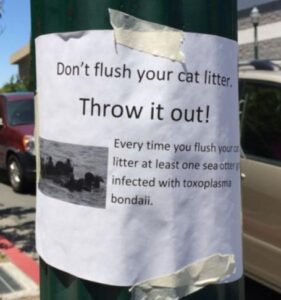
I am afraid I can not emphasize this enough, do not dispose of your cat litter through flushing. Here are a few reasons why.
Some cat litter is a super absorbent polymer, especially around water. Once flushed into the system, they do not disintegrate and instead accumulate at the lowest point of the drainage system. Continuous accumulation leads to eventual blockage and an increase in our plumbing bills.
Cats are harmless animals, but I have to warn you they are excellent disease and infection carriers. Cats excrete harmful parasites; this can easily be transmitted to human beings and other animals.
Finally and most importantly, the waste treatment is not equipped to tackle some of the parasites cats excrete despite the big strides that have been made so far in this field. These parasites get back into our homes but through a different and more dangerous source, our drinking. I don’t think I need to explain the extent of harm and damage this may cause not only to our health but also to the health of our pets and environment.
The parasites in feline waste cause infection and diseases, but this fact has already been established. However, did you know that pregnant women and infants are the most prone to these infections? Don’t endanger the lives of others, and simply avoid flushing any form of cat litter.
How to safely compost cat litter?
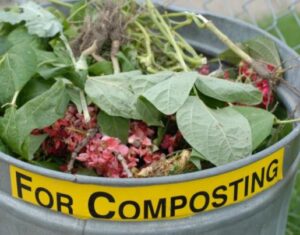
At this point, it is evident that cat litter can be compost, but can this be done safely? Does it pose any threat to the environment? Composting cat litter has become a norm in today’s society, especially around garden owners who coincidentally own cats too. For those of us who are new to this, you might as well relax because I have covered everything you need to know about composting cat litter below.
First, you need to know the essentials of composting cat litter. These are the common rules or basic knowledge involved in composting.
- Clay or silica-based litter can not be compost. Only plant-based litter is qualified for the composting process.
- Always use a large area, hole, or can when composting. This increases the rate and efficiency of the composting process.
- Any compost that contains cat litter should sit for at least two years before being utilized.
Having these simple rules in mind, we are good to go and begin composting. While carrying out this process, it is important to note that you should practice extra precautions due to the presence of harmful pathogens and parasites present in cat litter. Here is a safe procedure to follow so as to properly and safely compost cat litter.
1. Choose the area where composting will occur. Be very careful when selecting this area. It should be way from food growing areas in addition to being large enough for the composting process.
2. Carefully select the type of cat litter you will use. Remember, it should only be made of pure biodegradable substances so as to break down in the compost.
3. Add more nitrogen to the compost. I bet you are probably wondering why this is necessary since cat wastes already contain nitrogen. This is necessary since the level of nitrogen is lower in comparison to the level of carbon dioxide. The addition of nitrogen-rich supplements is done so as to evenly balance the compost heap. Some sources of nitrogen include chicken manure or leftover vegetables.
4. Always keep the compost heap moist and be observant and quick to add in supplements that may be lacking. Always allow the heap to settle for at least two years before using it.
How to dispose of cat litter without using plastic bags?
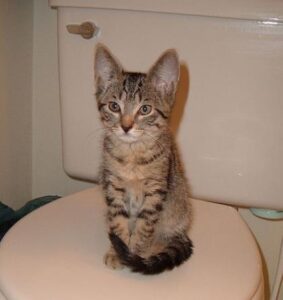
It is possible to dispose of your cat litter without using plastic bags. The main reason why plastic bags are discouraged is that they are not environmentally friendly, and people are now going green; you wouldn’t want to be left behind, or would you? Here are a few alternatives to plastic bags.
The easiest option to replace plastic bags with is the use of biodegradable bags, and you guessed it, they are not only easily available but also environment friendly. These bags are easily and fast replacing plastic bags; you and your pet can not afford to be left behind. In case you haven’t started using these bags, I highly suggest you upgrade as soon as possible.
Alternatively, just dispose of your cat litter through other methods of disposal that do not require plastic bags. These methods include composting. Could cat litter disposal methods get any greener than this? I highly doubt it. Not only is composting environmentally friendly, but it also serves not one but several advantages to you as the cat owner.
A lot of awareness has been raised concerning plastic bags and the harm they cause to our environment, not to mention the endless campaigns on preserving and caring for our environment and the earth as a whole. As responsible cat owners, we should aim to make the environment friendly to not only ourselves but also to our fluffy friends; we can do so by eradicating the use of plastic bags in our homes and around our cats.
Conclusion
Cat litter is very important in any home with a cat. Indeed they symbolize more work that comes with the feline, but we must also not ignore the perks that come with owning a cat; these fluffy pets are very clean and responsible. As a safety measure, always strive to keep your cat indoors; this not only lessens the risk of it contracting pathogens or parasites but also protects and prevents you from cat-related infections.
While disposing of cat litter, always be careful and wash your hands thoroughly after the entire process. I can not emphasize enough the importance of maintaining a clean cat litter at this point, but while doing this, ensure you protect yourself, your pet, and the environment.
After the disposal process is complete, ensure it won’t harm the surroundings even after years to come. Avoid using plastic bags and keep in mind the future is green; do not get left behind.
You may be interested in:
How to dispose of cooking oil?
